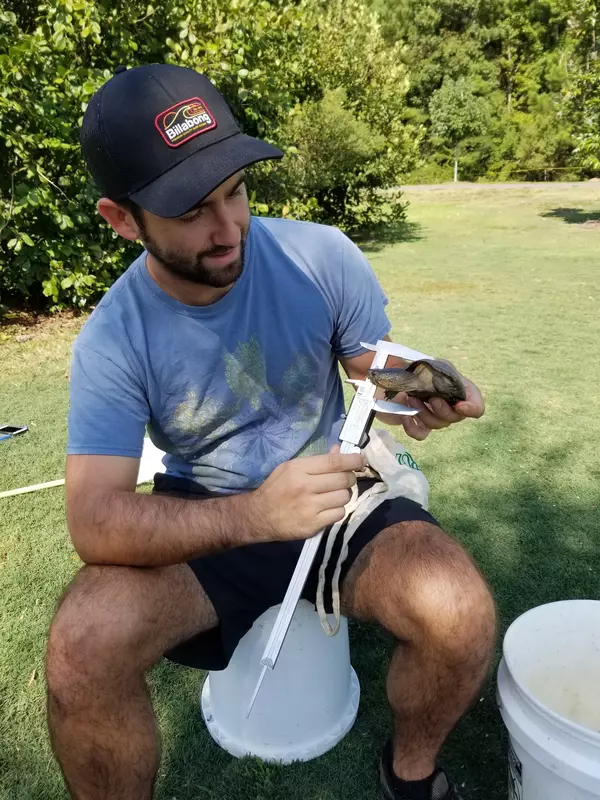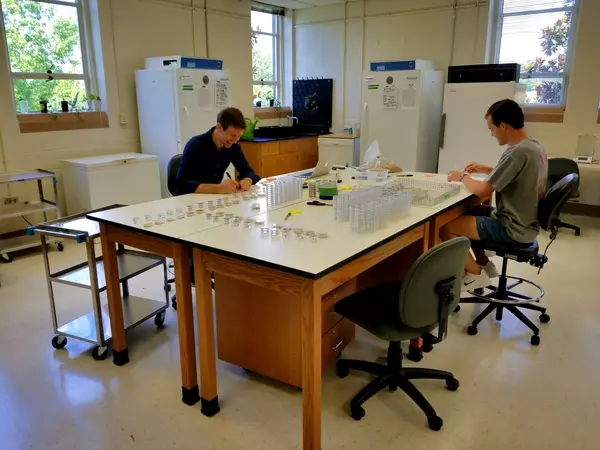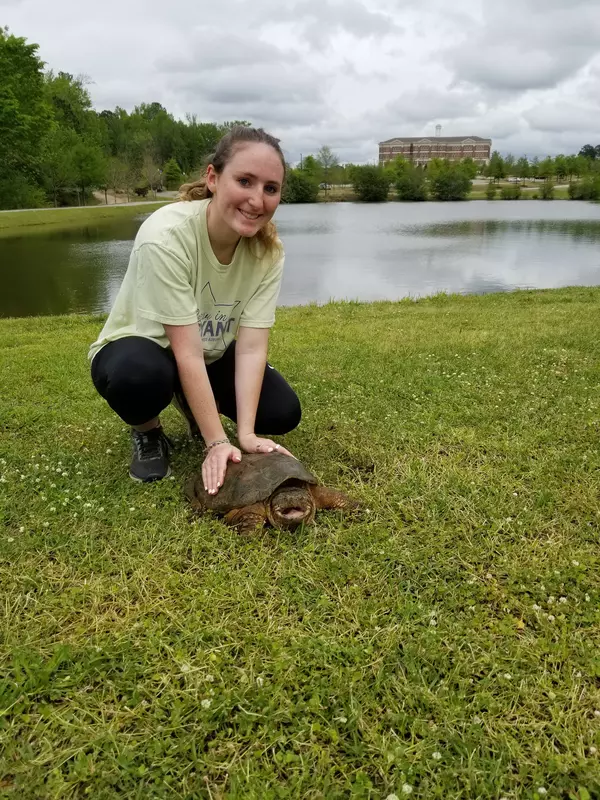Available every semester (including summer)
We require students to have volunteered on a project in the research group for at least one semester before they can take BIOL 4980. Contact Dr. Wolak to discuss this opportunity and how to enroll.
Course Description and Student Learning Objectives
BIOL 4980 is a course designed to provide Biological Sciences majors an opportunity to:
- (1) experience scientific research in the student’s area of study
- (2) develop mentoring relationships with faculty and graduate students
- (3) develop analytical, quantitative, problem-solving, and communication skills in a research setting.



This course provides students with experiences that may address multiple DBS Student Learning Outcomes (SLOs), but especially SLOs 5 and 6 (below):
-
SLO 5: Students will be able to apply the scientific method to formulate testable hypotheses, gather data that address the hypotheses, and analyze the data (statistically, graphically) to assess the degree to which their scientific work tests their hypotheses and draw appropriate conclusions from the data.
-
SLO 6: Students will develop their metacognitive skills. Metacognition is defined as the process by which students reflect on and communicate about their role in learning. Reflection and communication may include: 1. Awareness of choices made in response to the opportunities (i.e. homework, office hours, review sessions) and constraints (i.e. challenging problems, short time frames) on learning, and/or; 2. Evaluation of the success of such choices, particularly across tasks and contexts. Ultimately, these activities should help students develop and articulate their science knowledge and its value to their professional and life long learning goals.
Other DBS SLOs that may be involved in BIOL 4980 (depending on the exact nature of the research experience decided by the Student and Dr. Wolak) may include:
-
SLO 1: Students will be able to critically review scientific articles in the life sciences. They will be able to recognize the tested hypothesis (or hypotheses) and identify the strengths, weaknesses, and major intellectual contributions of the articles.
-
SLO 2: Students will be able to effectively locate, evaluate, and summarize published information in the life sciences. They will be able to identify appropriate sources for specific information needs and use appropriate search tools and search strategies to access needed information.
-
SLO 4: Students will be able to communicate effectively to the appropriate audience in the written genres common to biological sciences (e.g., lab reports, research articles). Components of successful written communication include the effective organization of scientific content, appropriate use of language, and correct use of scientific citations.
-
SLO 8 Organismal Biology: Students will apply broad knowledge of the structure, function, and diversity of organisms to illustrate how ecological and evolutionary processes have shaped organisms at the individual, population, community, and ecosystem levels. Students will have skills related to behavior, physiology, biodiversity, systematics, evolution, ecology, and/or conservation research.
Description of Planned Research
Phenotypic differences among individuals within a population form one of the the basic components necessary for natural selection. If the phenotypic differences are caused, in some part, by differences in genotypes then there exists the potential for an evolutionary change in response to selection. Such adaptive evolution is the process by which populations become better matched to their environment or react to environmental change, manifested by population growth. The Student will investigate and quantify population dynamics and/or phenotypic variability. Investigations may take several forms, but will center around: measuring and forecasting population growth, quantifying among-individual variation under changed environmental contexts, measuring the extent to which different sources of genetic variability explain observed phenotypic variation, describing and measuring genetic and phenotypic similarities using population pedigrees, or characterizing phenotypes and their variability at several potential scales (e.g., among-individuals or within-individuals).
The Student will also participate in a program to improve their quantitative reasoning skills as well as find appropriate articles in the scientific literature. These activities will build towards one of three final assignments, depending on the Student’s progress through the following sequence:
- (1) Annotated Bibliography
- (2) Research Project Proposal
- (3) A short format Scientific Paper
